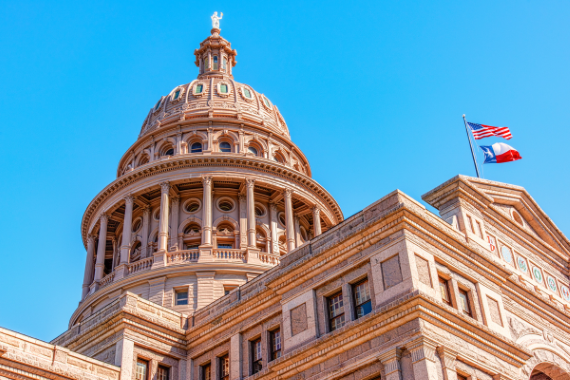TX Legislative Update – Houston Perspectives - Week 1
Published Jan 13, 2023 by Taylor Landin
During the 88th Legislative Session, the Greater Houston Partnership will provide a weekly update on newsworthy items from Austin. This week, the 88th Legislative Session begins, Comptroller Hegar releases the Biennial Revenue Estimate, and the Partnership highlights its top priorities.
Legislative Session Begins
Texas lawmakers returned to Austin this week for the 88th Legislative Session, House and Senate members were sworn in and as expected, Representative Dade Phelan (R-Beaumont) was elected Speaker of the House.
The Houston region’s delegation returned to the capitol, including some of the most-tenured legislators in both the House and Senate. Senator John Whitmire, who ranks first in seniority and is “Dean of the Senate,” and Representative Senfronia Thompson, have nearly a century of combined legislative experience.
In total, 46 members from the greater Houston region’s delegation were sworn in this week, including former Rep. Mayes Middleton (R-Wallisville), now representing SD-11, and six freshman representatives:
- Charles Cunningham, HD 127 (R-Humble)
- Mano DeAyala, HD 133 (R-Houston)
- Jolanda Jones, HD 147 (D-Houston)
- Stan Kitzman, HD 85 (R-Pattison)
- Suleman Lalani, HD 76 (D-Sugar Land)
- Terri Leo-Wilson, HD 23 (R-Galveston)
Texas Comptroller Glenn Hegar Releases Biennial Revenue Estimate
Follow the Money: On January 9th, Glenn Hegar, Comptroller of Public Accounts, released the Biennial Revenue Estimate (BRE), revenue the state expects to receive through the next two-year period.
Highlights:
- A record $188.2 billion will be available for general-purpose spending during the 2024-25 biennium.
- The Economic Stabilization Fund (ESF), also called the Rainy Day Fund, is expected to reach an unprecedented $27.1 billion at the end of the 2024-25 biennium.
Why it matters: the only thing the Texas legislature is constitutionally required to pass is a balanced budget every legislative session. Extra money available will drive all conversations and decision-making at the capitol as lawmakers have the opportunity to decide how to appropriate funds.
Partnership’s 88th legislative priorities
The Partnership’s top priorities in 2023 include the following:
- Economic Development Incentives: The Partnership supports creating a new school property tax abatement program as a competitive economic development tool.
- Why it matters: incentives are critical to bringing new business, making our state attractive to emerging industries and ensuring our long-term competitiveness.
- Energy Transition: The Partnership supports removing regulatory roadblocks and creating certainty for those investing in the future of Texas energy.
- Why it matters: Texas is poised to lead the energy transition and safeguard our place as the global energy leader.
- Higher Education Funding: The Partnership supports increasing the state’s investment in the University of Houston (UH).
- Why it matters: UH is the region’s leading public institution, and meaningful investment would improve Texas’ reputation, expanding competitive research and funding opportunities.
- Flood Mitigation: The Partnership supports significant re-investment in the Flood Infrastructure Fund.
- Why it matters: the fund is expected to be exhausted early this year and it’s important for the legislature to continue its commitment to strengthening local communities by investing in state resiliency.
- Community College Finance: The Partnership supports student-focused and industry-led recommendations.
- Why it matters: community colleges are a foundational part of our workforce development system and outcomes-based finance reforms are important to create a system which can meet the future needs of industry.
View our Public Policy page to see the full agenda and learn more about all issues the Partnership is supporting this legislative session. The Partnership will be in Austin to celebrate the 88th Legislative Session on January 24th. Details can be found here.
 The Houston Report
The Houston Report




















